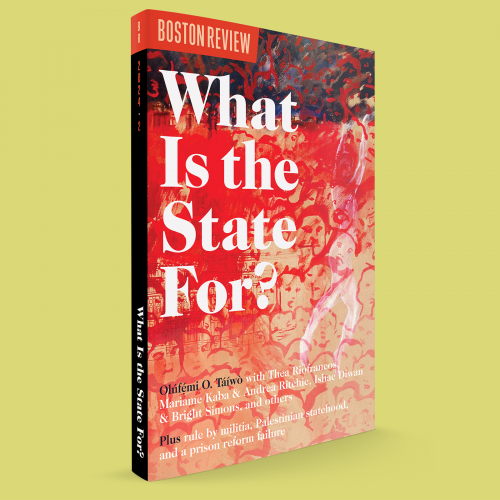I count myself a fellow traveler with the political project Táíwò lays out. Though he does not use this phrase, this is real utopian thinking: identifying the contours of a politics of the here and now that can be fundamentally transformative. Looking forward and back at the same time, it seeks ways to reclaim the public without going back to the technocracy, racism, and authoritarianism of the welfare state.
Where we differ lies more in the details. To solve the apparent tension between left strategies that are for or against state engagement, Táíwò updates some classic sociology with a generous “all of the above.” I offer what I hope is an equally generous “yes, and . . .” rooted in the experiences of Latin America, where people have been busy experimenting with versions of a reinvented left project for the last few decades.
Beginning in the 1970s, the Latin American left reinvented itself, turning away from armed struggle and bureaucratic state socialism toward something much more plural and fluid. Movements and parties have variously emphasized national parliamentary struggle, local governance, or autonomous arenas. But one of the enduring lessons—if not the lesson—is that occupying the state is not enough. Whether we are speaking of Venezuelan Bolivarianism, Uruguay’s Frente Amplio, the Zapatistas of Chiapas, or even the relatively reformist Workers’ Party of Brazil, all recognized the limits of approaches premised on taking over the state.
“We know it is not enough to get to the government to then change society,” reads the 1999 Brazilian Workers’ Party’s Program for a Democratic Revolution. “It is also necessary to change society as we get there.” The idea recurs in the work of Subcomandante Marcos, former leader and spokesperson of the Zapatistas, who have inspired a generation with their ambitious experiment in liberation and self-rule in Mexico’s southern region. As a famous phrase attributed to his Mountain Writings goes, “Zapatistas do not want to enter the halls of power, evict those who are there and take their place, but to break the walls of the maze of history, to leave it, and, with everyone, to make another world without exclusive rooms, doors, or keys.”
Much of the debate became sharpest in the 1980s and early 1990s, when activists were facing the return to formal democracy in many countries but lacked viable left models to borrow from, given the disappointments in Eastern Europe. The context shares some similarities with the United States today: sharply increasing inequalities, a lack of credible institutional outlets for political expression, uncertainty about rights and freedoms, a precarious and splintered job market, the hollowing of public provision—alongside radical resistance and real hope in local arenas. It is not surprising that questions facing movements today—whether and how to engage political parties and institutions, whether to be part of a system that was not made for us, whether voting for the least bad option in national elections is an exercise in democracy—find so many echoes in the history of Latin American movements and parties of the era.
There are striking similarities, too, regarding the more pointed concern of whether to participate in a system founded and premised on racial subjugation. This was an explicit matter of debate among Indigenous activists when Bolivia’s Movimiento al Socialismo was being formed in the late 1990s, just as it was for the Zapatistas and in Brazil’s Movimento Negro Unificado in the 1980s. In the United States, these debates about the meaning of popular sovereignty found deep resonance in the idea of abolition democracy, as originally articulated by W. E. B. Du Bois: abolishing institutions of subjugation while developing others as part of a transformative political project from below.
What emerged from the debates and struggles was a set of ideas and practices of a popular left project. From Uruguay to Mexico, under various influences like liberation theology, popular education, and Indigenous thought, this was a left that centered social movements, local struggles, and radical democracy. Throughout the continent, movements attached themselves to or morphed into new parties that won municipal, regional, and legislative victories before winning national governments. Locally, regionally, and sectorally, they managed to craft fluid intersectional and socialist coalitions that embraced social justice, human rights, feminism, LGBT issues, and environmental issues in ways that would have seemed absolutely unthinkable just a few years earlier. In place of abstract theoretical debates, the focus was on practical questions about how to create “another world” in the here and now, as the slogan went. At times these movements were able to catch a glimpse of that world: a rural cooperative on collectively owned land, a local government supporting the struggles of trans sex workers, a school that introduced Indigenous language and history for the first time. In doing so, these movements pushed political horizons to new frontiers; their victories cannot be undone or erased from popular memory.
The left-of-center national governments that ultimately grew out of these earlier on-the-ground movements have achieved lots of concrete wins, even if they have not always lived up to their promises—and indeed they have disappointed on issues from extractivism to land reform, not to mention the hardening of hierarchies surrounding ruling parties themselves. We can name very real gains, whether we are speaking of the governments of Evo Morales in Bolivia, Lula in Brazil, and even the recently established tenures of Gustavo Petro in Colombia and Gabriel Boric in Chile. Thanks to this Pink Tide, as it has become internationally known, tens of millions of people have been brought out of poverty and gained access to public services. And perhaps most of all, Latin American countries have begun to face their settler and slave pasts, taking steps such as recognizing plurinationality and implementing affirmative action. This legacy is undeniable.
We in the United States today clearly do not lack the foundations of a new, radically democratic, leftist, transformative political project that draws on popular creativity and imagination—from the groundswell of activism around social housing and tenants’ rights, to the resurgence of labor activism, to the courageous student antiwar activism. And as in Latin America, sterile ideological debate is often so much less important than strategic discussion, anchored in the arts of solidarity and put in the service of concrete struggles. The urgent task before us is articulating multiracial, multicommunity, and multiclass coalitions while connecting the energies of our social movements with institutional engagements in ways that do not turn those into instruments of legitimation for a broken political system.
The recent history of the Latin American popular left provides a useful template here: the center and moral compass of that popular bloc needs to be occupied by oppressed communities and their ambition to achieve social transformation. What we do not yet have is a structure of political representation—whether it takes the form or name of a party or not—that amplifies and connects these struggles, that has an institutional face, that leads by following, and that helps bring about a broader vision while enabling specific struggles. It will have to balance the choices Latin Americans have long faced—recognizing and privileging individuals or groups, formalizing or not, finding ways to remain democratic—as well as others they are coming to, such as how to face the urgency of climate change. Angela Davis has written about the need for a new political party, one “organically linked to the range of radical movements” but
anchored in the idea of racial capitalism—it would be antiracist, anticapitalist, feminist, and abolitionist. But most important of all, it would have to acknowledge the priority of movements on the ground, movements that acknowledge the intersectionality of current issues—movements that are sufficiently open to allowing for the future emergence of issues, ideas, and movements that we cannot even begin to imagine today.
As we grapple with these questions, we will need to rethink what it means to engage institutions—abolishing, reforming, and reinventing them in ways that express our creativity, empower communities to decide on matters that affect them, balance inside and outside strategies, and activate popular politics. The Latin American left provides us with remarkable examples of what that kind of thinking can accomplish. Transforming the world requires nothing less.
Independent and nonprofit, Boston Review relies on reader funding. To support work like this, please donate here.









